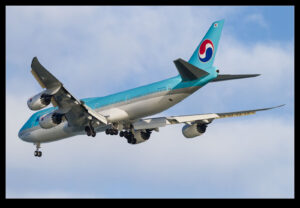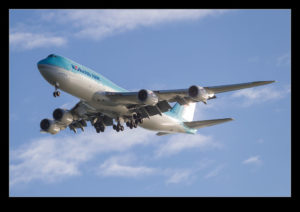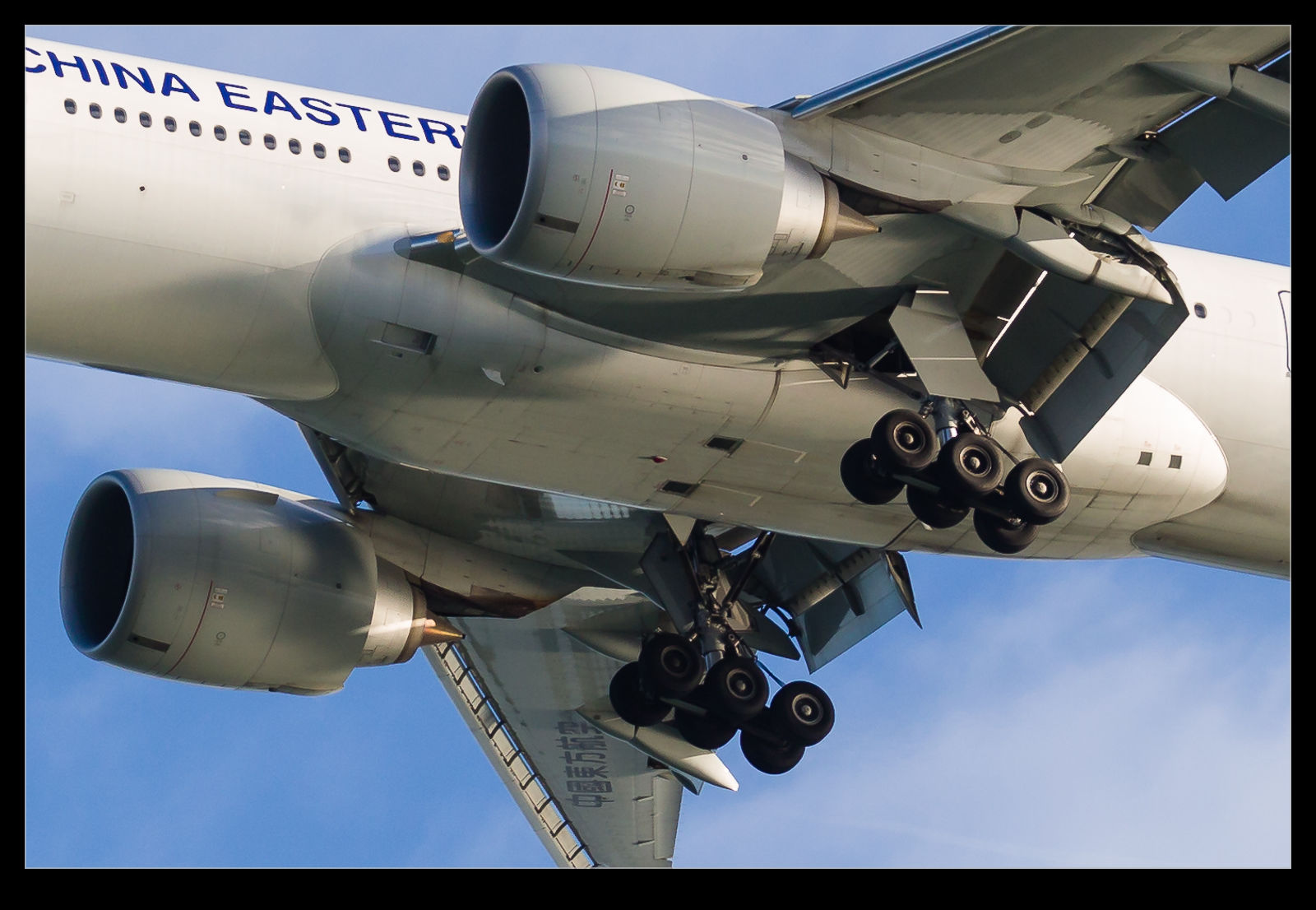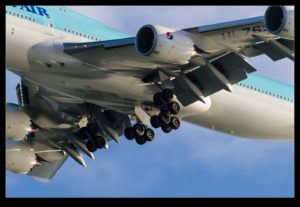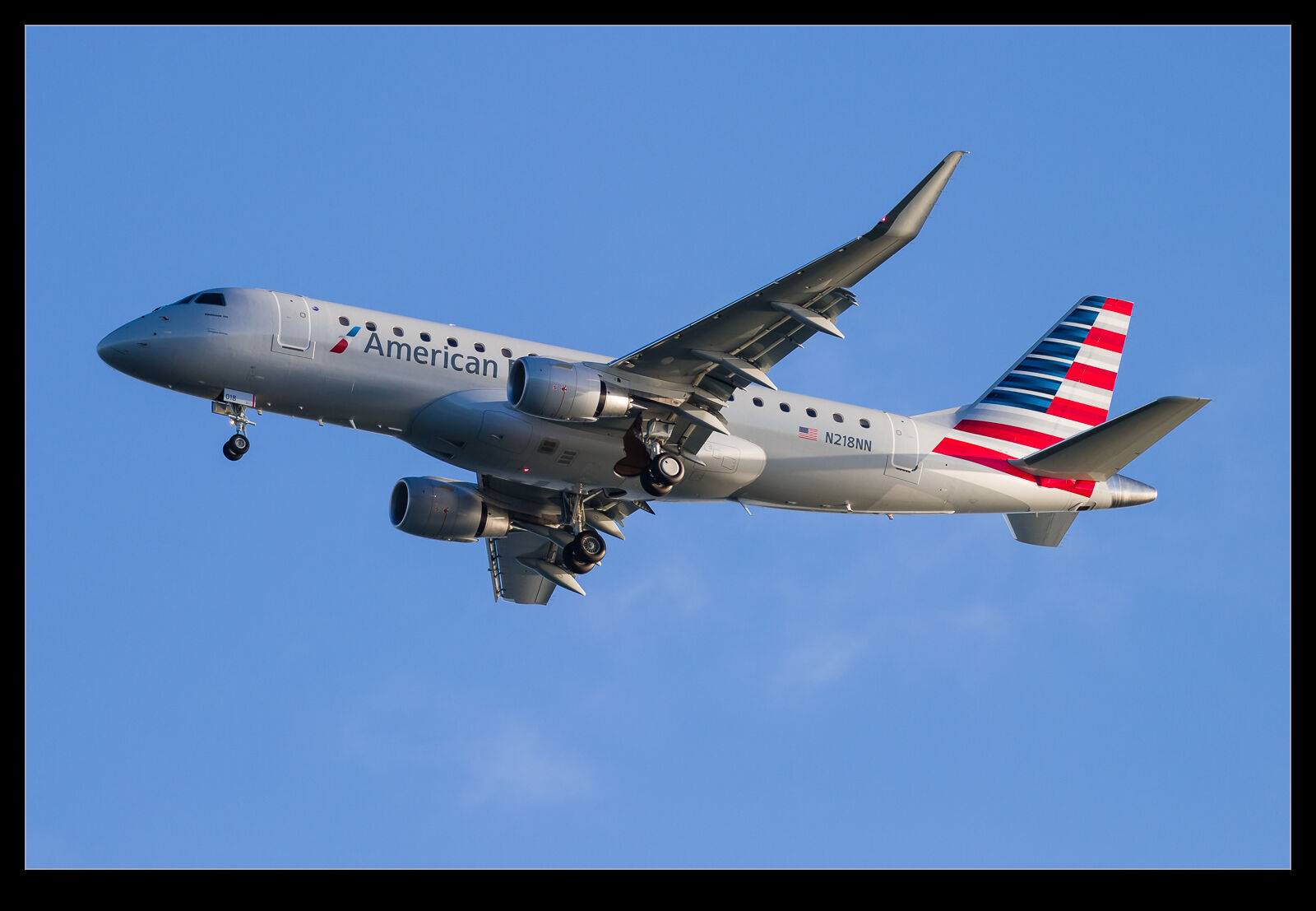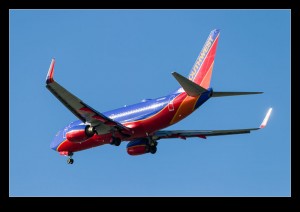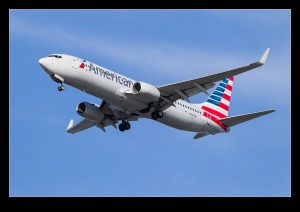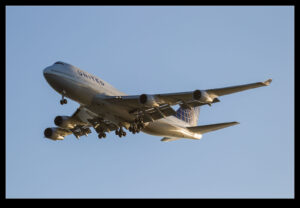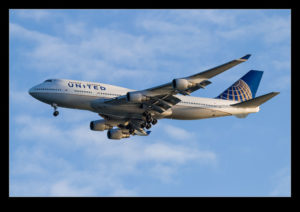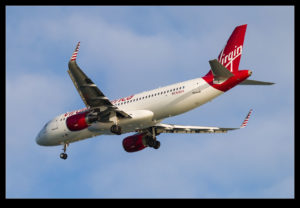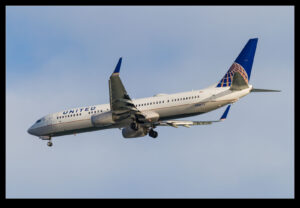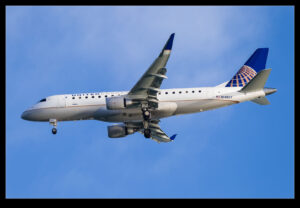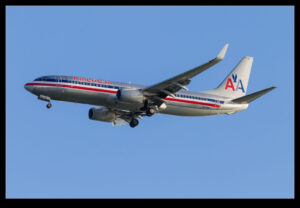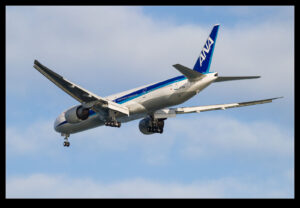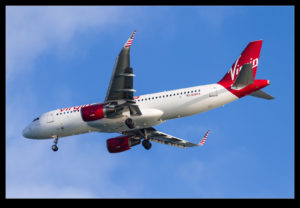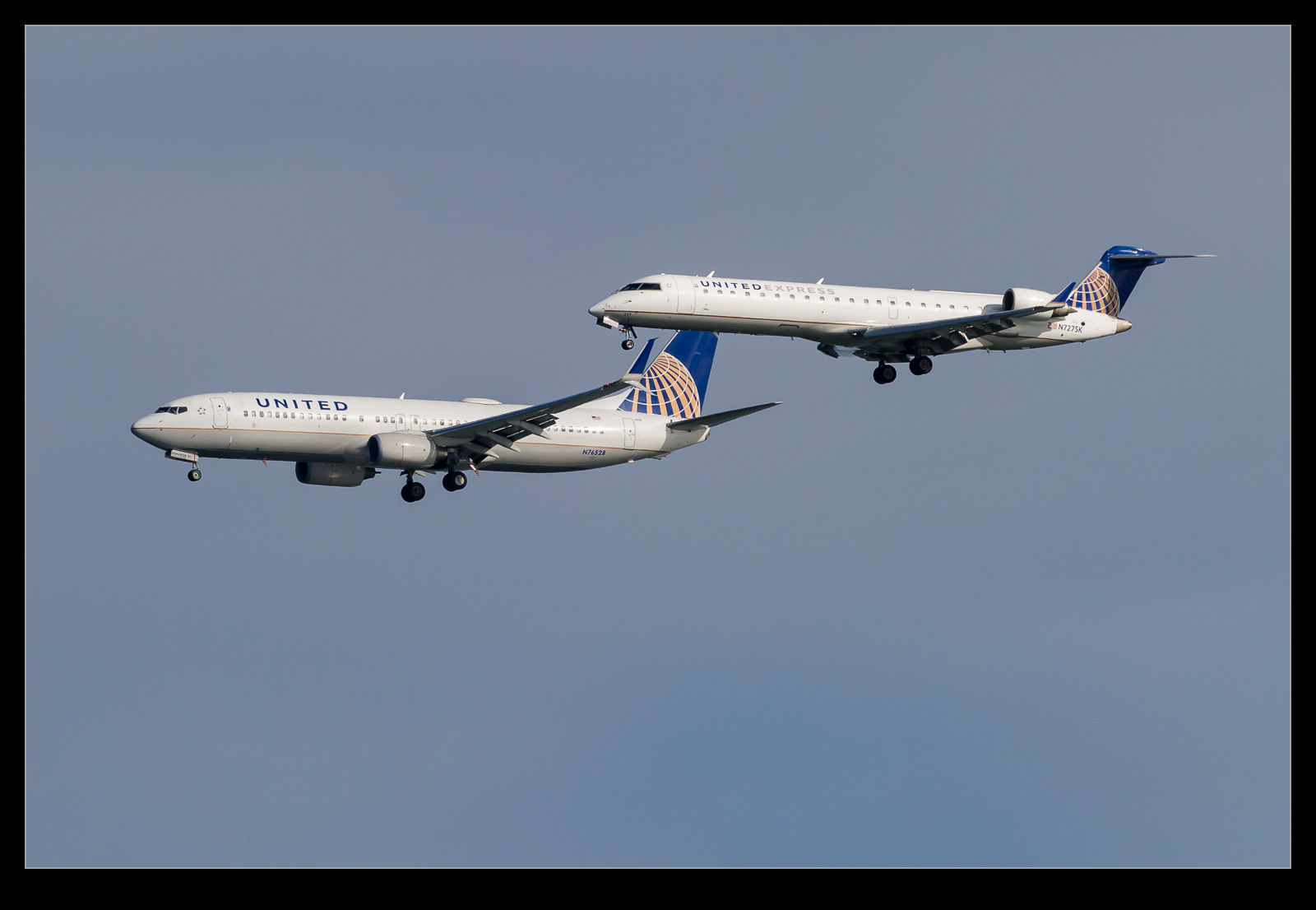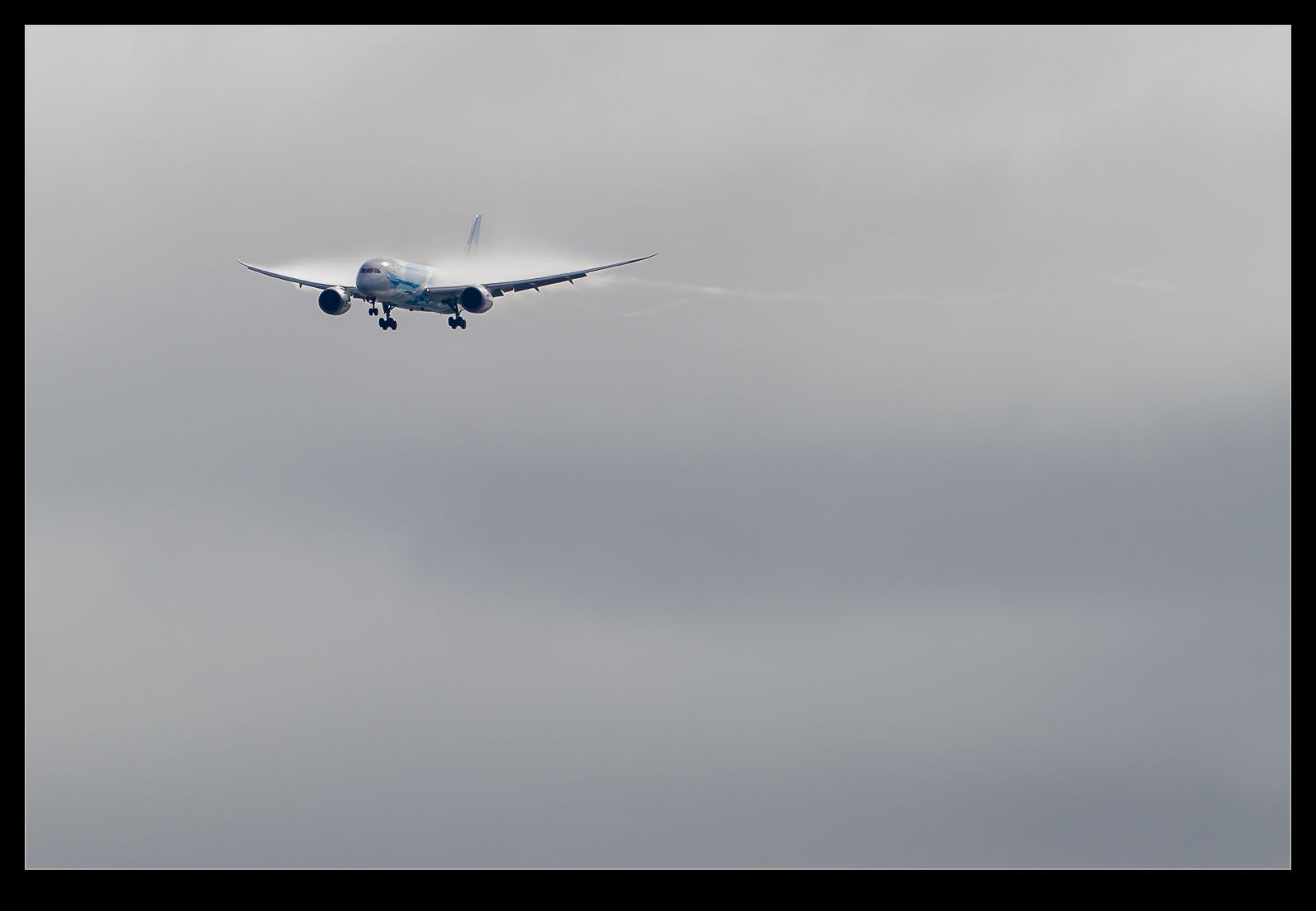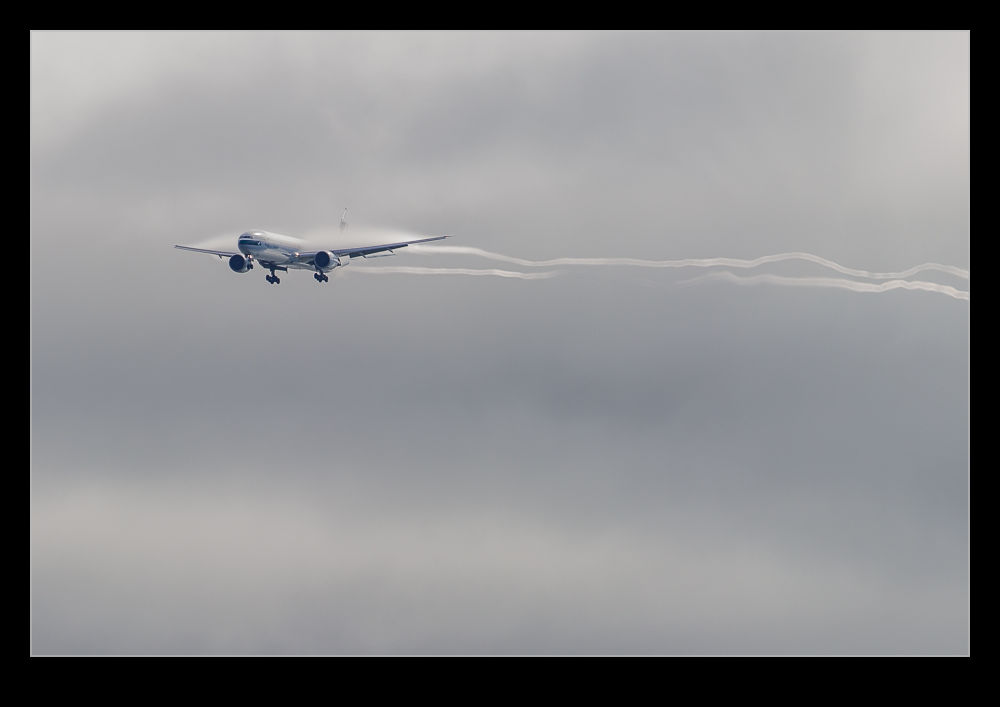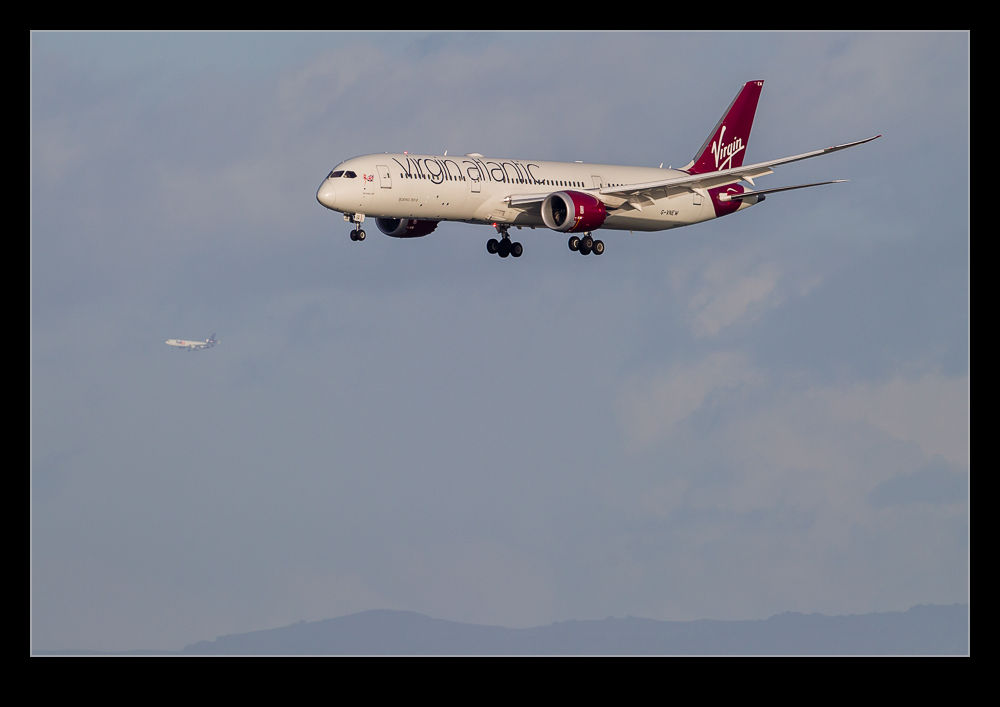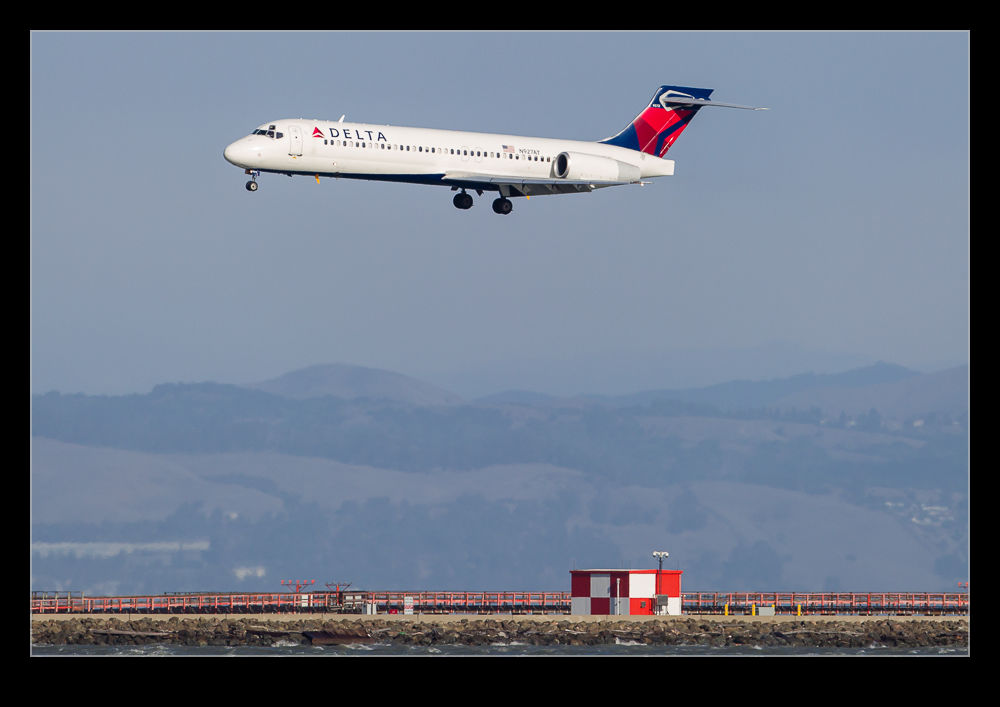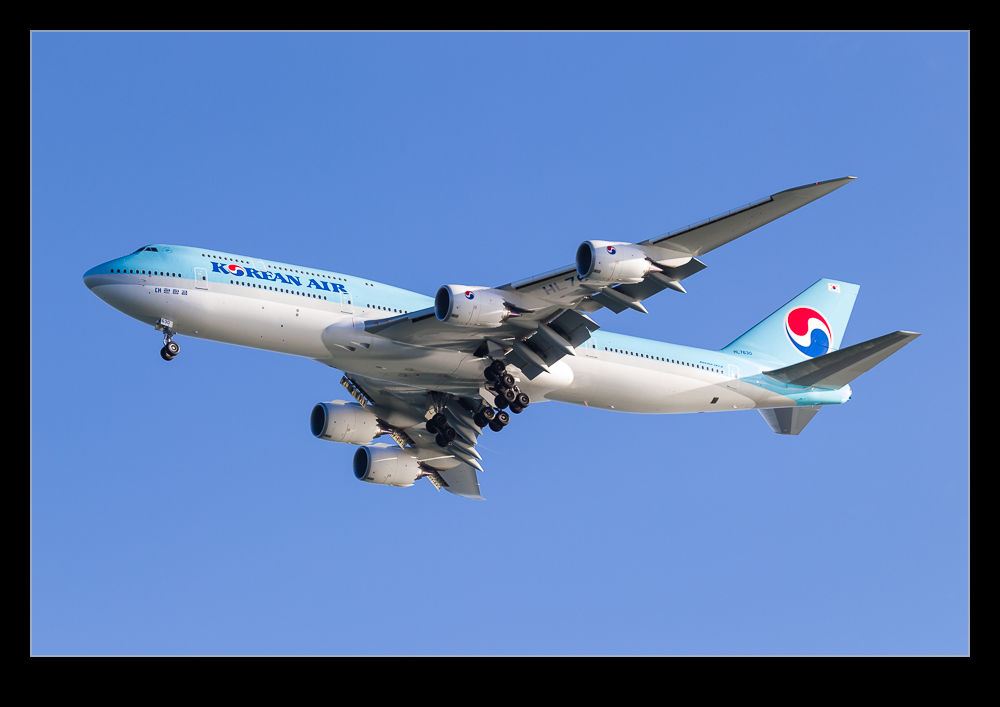 I nearly got myself late for an arrival when waiting for a Korean 747-8 a while back as I mentioned in this post. I thought at the time that it was silly to focus on the Korean jet since it would be showing up on a regular basis. Sure enough, I have seen them again since. This one I got at Coyote Point with some nice early morning light. The low light angle meant the underside of the jet got a lot of light and the plane seemed to glow to me as I was shooting it. A nice way to get this type again.
I nearly got myself late for an arrival when waiting for a Korean 747-8 a while back as I mentioned in this post. I thought at the time that it was silly to focus on the Korean jet since it would be showing up on a regular basis. Sure enough, I have seen them again since. This one I got at Coyote Point with some nice early morning light. The low light angle meant the underside of the jet got a lot of light and the plane seemed to glow to me as I was shooting it. A nice way to get this type again.
Tag Archives: KSFO
It’s Cold Up High
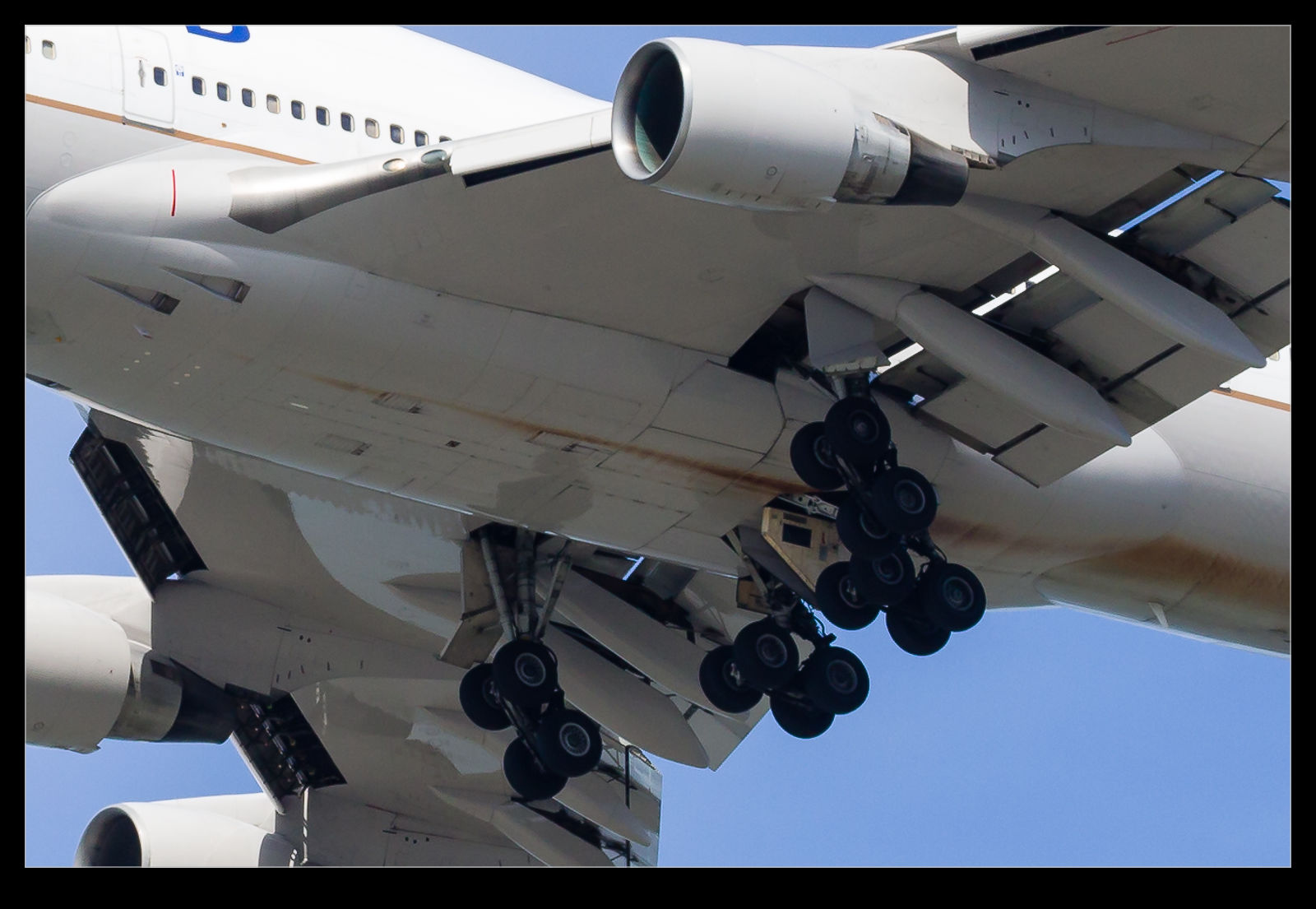 One element of shooting at Coyote Point that I particularly like is the way you can get a good view of the undersides of the jets as they come in. The long haul flights often have an added feature. The wing fuel is mostly burnt down by the time they land but there are reserves still in the tanks to cover unforeseen events. Many hours at altitude has chilled the fuel down nicely so, as the plane descends into the moist air over the bay, a nice frost forms on the underside of the wings where the fuel is still sitting.
One element of shooting at Coyote Point that I particularly like is the way you can get a good view of the undersides of the jets as they come in. The long haul flights often have an added feature. The wing fuel is mostly burnt down by the time they land but there are reserves still in the tanks to cover unforeseen events. Many hours at altitude has chilled the fuel down nicely so, as the plane descends into the moist air over the bay, a nice frost forms on the underside of the wings where the fuel is still sitting.
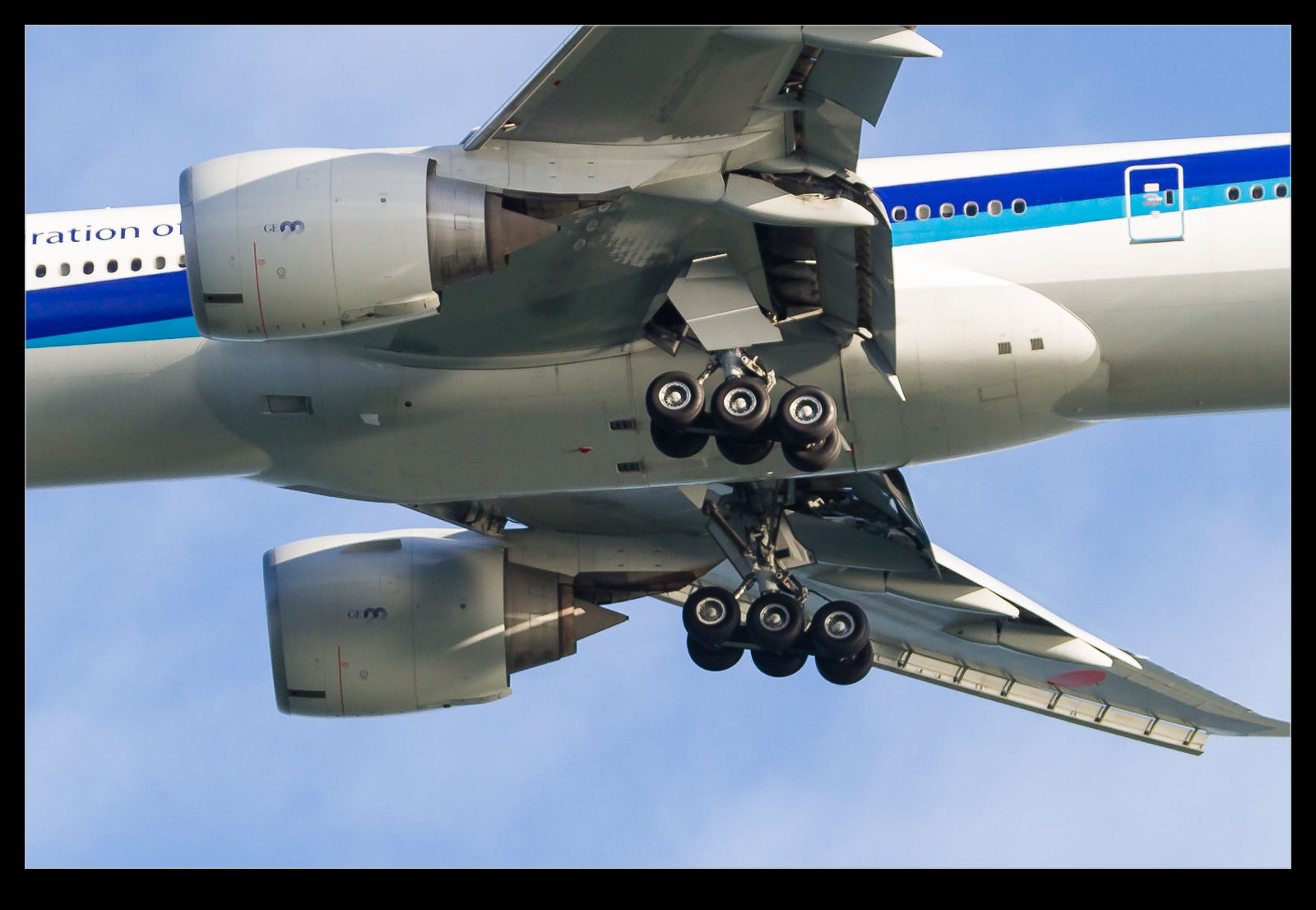 I have seen this on various jets over the years so this post is a compilation. Some of these shots are recent and some are from older shoots. Rather than show the whole plane, these are focused on the areas where the frost forms. They give you a good idea of the internal structure of the various types involved.
I have seen this on various jets over the years so this post is a compilation. Some of these shots are recent and some are from older shoots. Rather than show the whole plane, these are focused on the areas where the frost forms. They give you a good idea of the internal structure of the various types involved.
Early Morning Light at Coyote Point
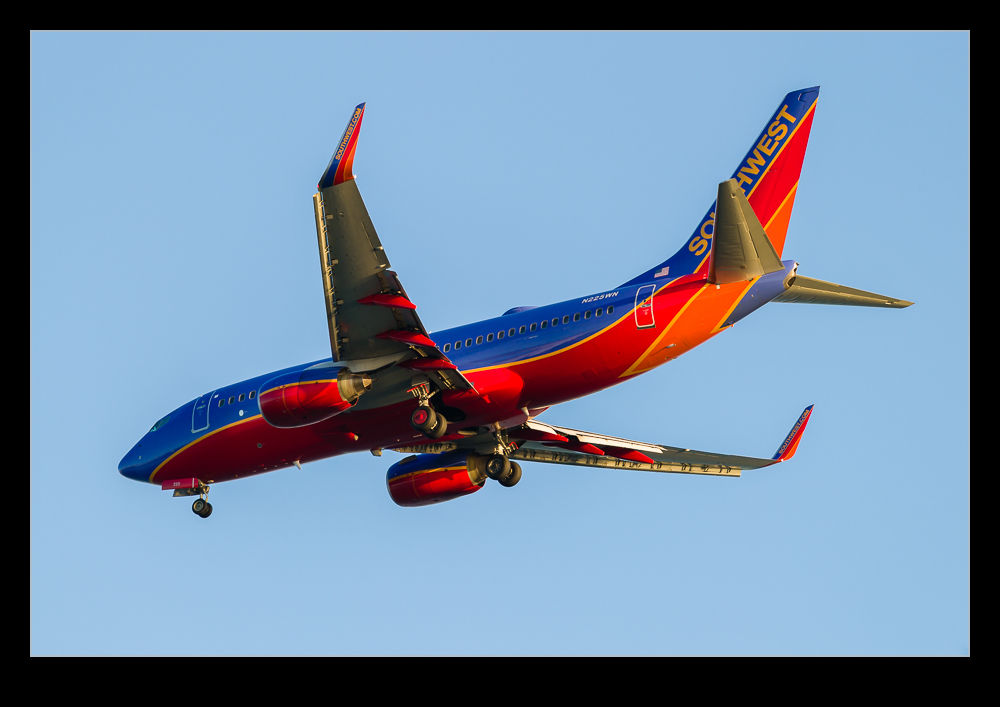 Early morning is not usually a good time to shoot anything at SFO. The sun is behind the planes as they come in so you don’t get a particularly appealing light angle. However, the middle of winter means the sun rises a long way south so, while it still starts out a bit behind things, it quickly moves to an angle that starts to work well. The planes end up with good lighting as they pass and the light on them as they head away can be very conducive to nice shots.
Early morning is not usually a good time to shoot anything at SFO. The sun is behind the planes as they come in so you don’t get a particularly appealing light angle. However, the middle of winter means the sun rises a long way south so, while it still starts out a bit behind things, it quickly moves to an angle that starts to work well. The planes end up with good lighting as they pass and the light on them as they head away can be very conducive to nice shots.
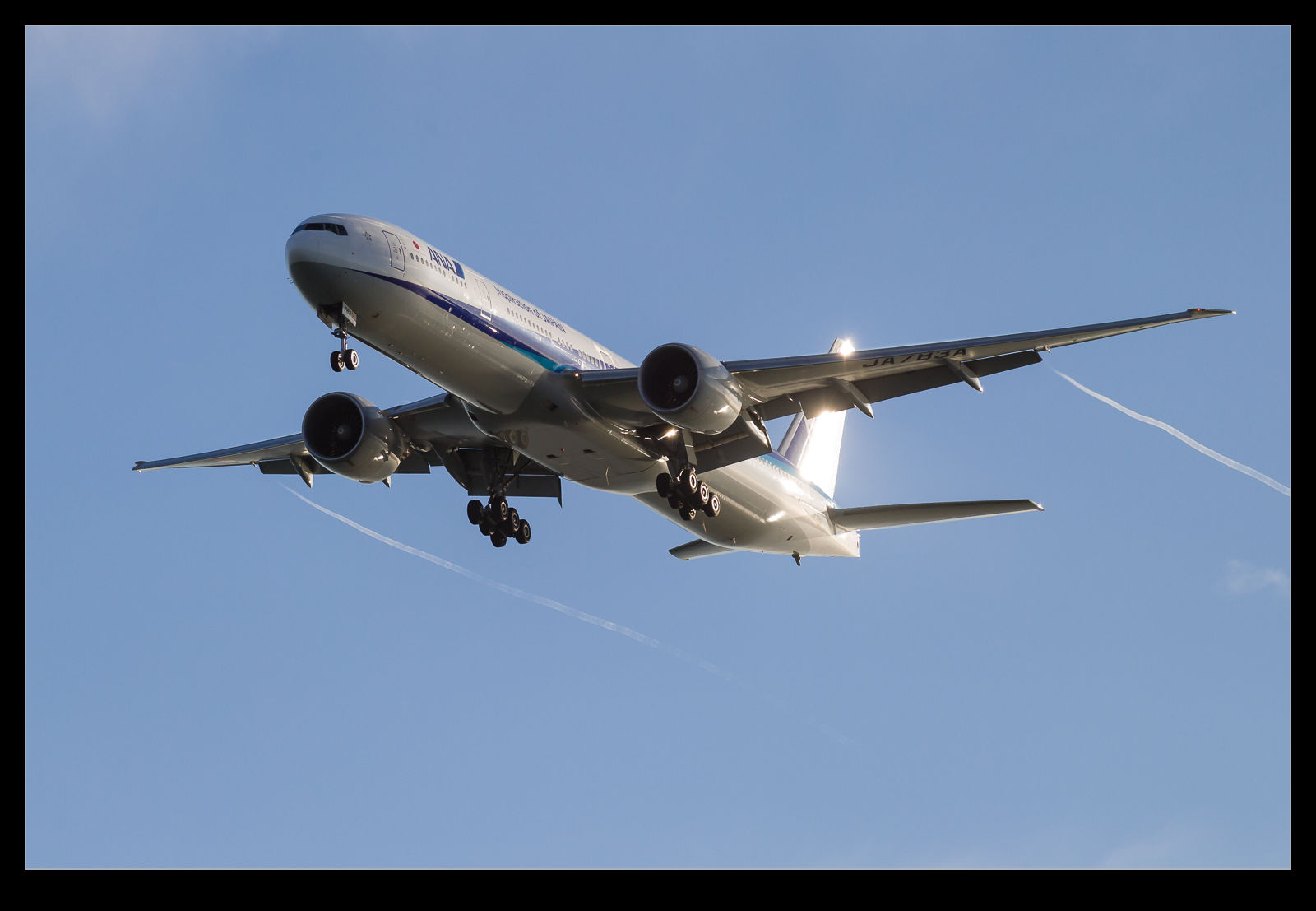 I was continuing my program of testing the 100-400 post the repairs it received at Canon. Coyote Point was a good place to start the day since it has better possibilities this early and it also allows for shooting down the approach path as the planes head to the runway. I also wanted to have a further go at multiple exposures to stack the images of the planes to make a composite of their flightpath. The early morning is also good because the relative humidity levels are up and the planes can trail some nice vortices.
I was continuing my program of testing the 100-400 post the repairs it received at Canon. Coyote Point was a good place to start the day since it has better possibilities this early and it also allows for shooting down the approach path as the planes head to the runway. I also wanted to have a further go at multiple exposures to stack the images of the planes to make a composite of their flightpath. The early morning is also good because the relative humidity levels are up and the planes can trail some nice vortices.
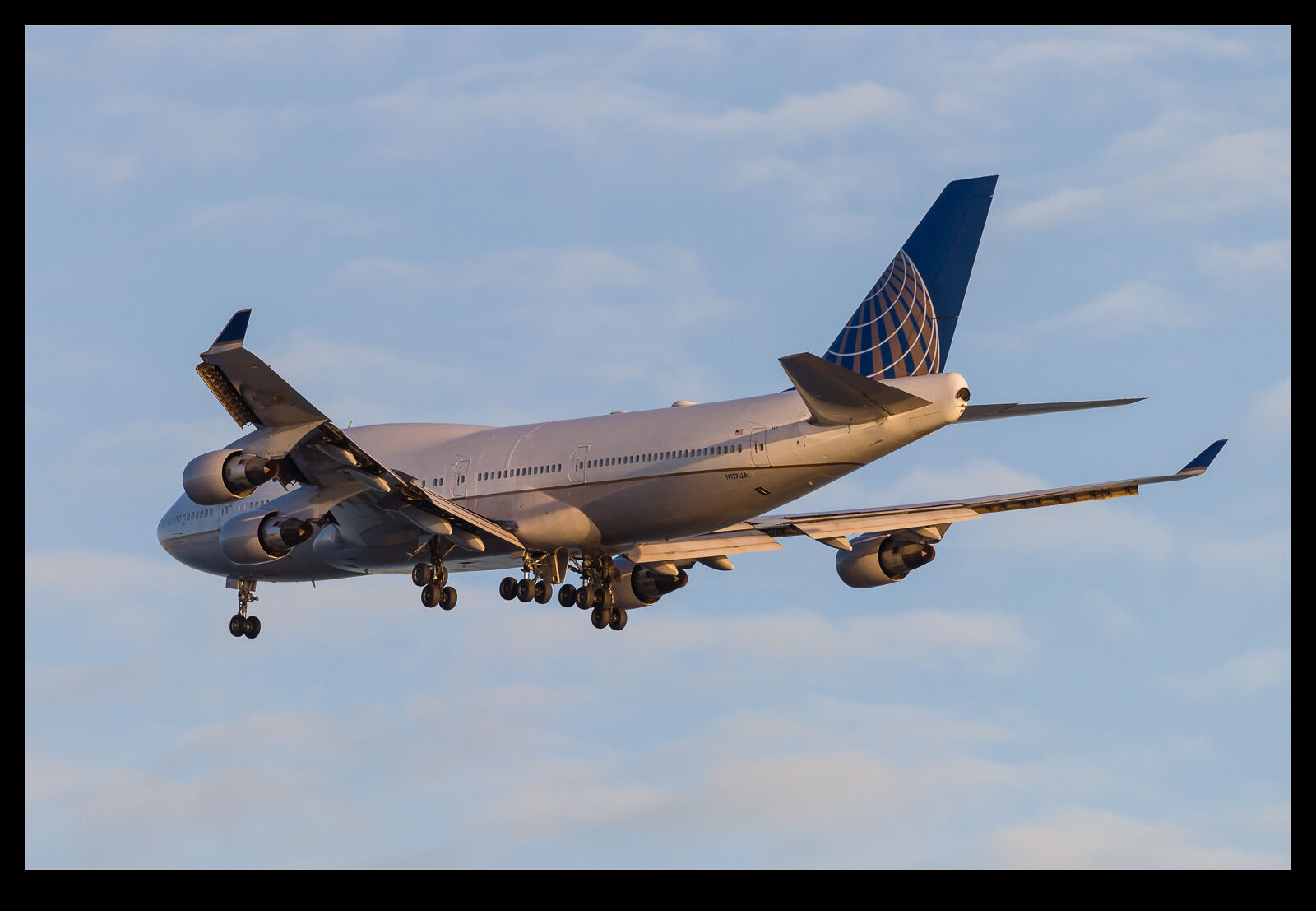 As the light angle comes around, it is still quite low in the sky. The result is some nice lighting on the underside of the airframe – something that is not normally something that you get. Rather than the warm glow you get with a setting sun, the light seemed a lot crisper and cleaner and I really liked the way the planes looked.
As the light angle comes around, it is still quite low in the sky. The result is some nice lighting on the underside of the airframe – something that is not normally something that you get. Rather than the warm glow you get with a setting sun, the light seemed a lot crisper and cleaner and I really liked the way the planes looked.
Formation of United Jets
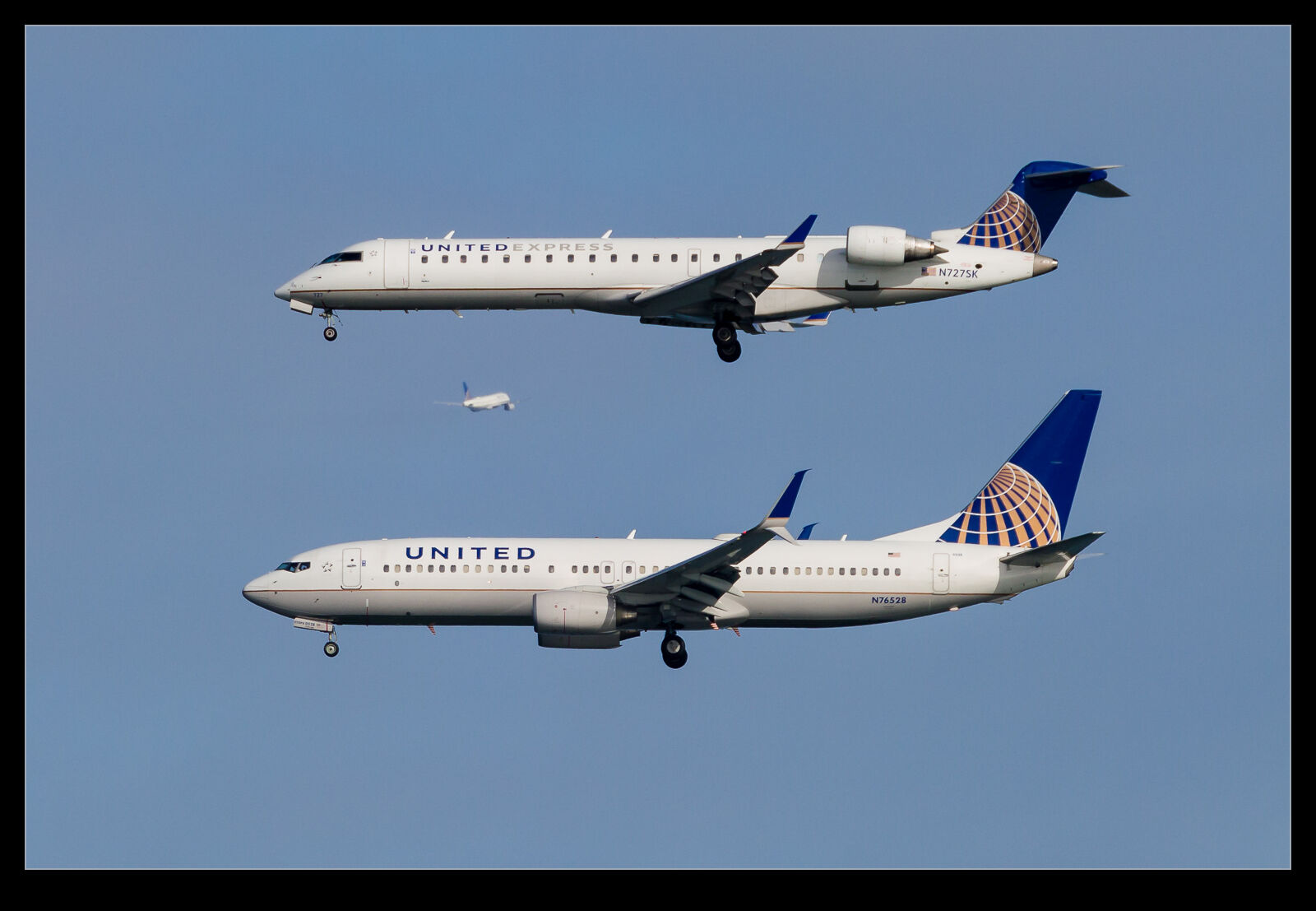 The parallel approaches at SFO are well enough known. I have blogged about them myself here and here. Getting two planes in the same shot is a cool result but it isn’t often that you get three and all of them from the same airline. I was out with Hayman and Roger when a pair of jets came down the approach almost perfectly together. We all got shots of them as they came in. I didn’t notice anything further until I was looking through the shots back at home. Apparently, a United jet was departing prior to the arrival of this pair and it happened to fly out on a path that aligned with my view of the pair. Three jets in one shot!
The parallel approaches at SFO are well enough known. I have blogged about them myself here and here. Getting two planes in the same shot is a cool result but it isn’t often that you get three and all of them from the same airline. I was out with Hayman and Roger when a pair of jets came down the approach almost perfectly together. We all got shots of them as they came in. I didn’t notice anything further until I was looking through the shots back at home. Apparently, a United jet was departing prior to the arrival of this pair and it happened to fly out on a path that aligned with my view of the pair. Three jets in one shot!
Humid Approaches to SFO
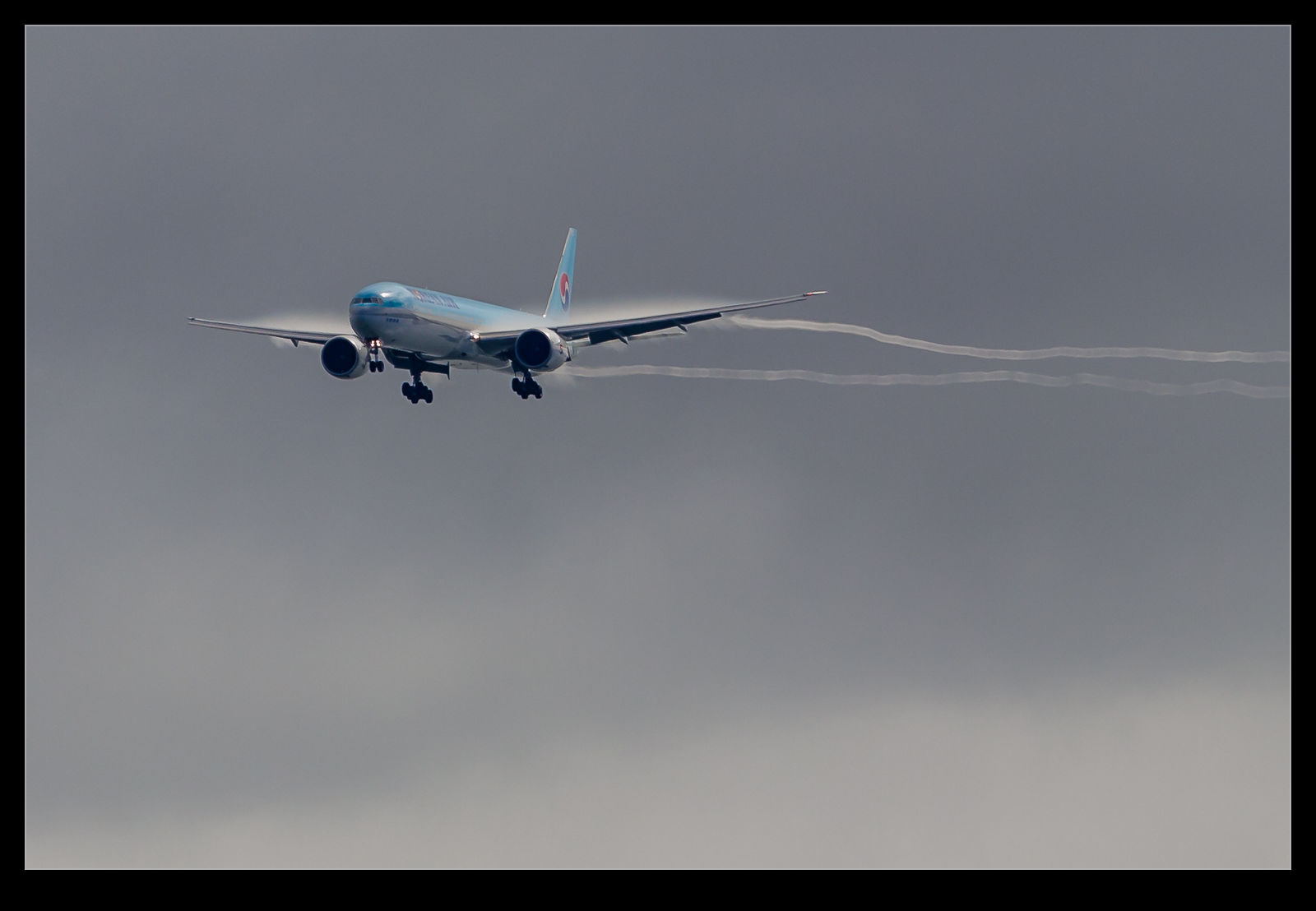 Moisture in the air is not always what you want when you are out shooting aircraft. However, it does have its benefits if there isn’t so much of it that everything is either obscured or gray. The weather conditions over San Francisco Bay can be very localized and, as the planes come down final approach, they can go through quite a variety. I was out hunting for Air Force One a while back and I got some good examples of this.
Moisture in the air is not always what you want when you are out shooting aircraft. However, it does have its benefits if there isn’t so much of it that everything is either obscured or gray. The weather conditions over San Francisco Bay can be very localized and, as the planes come down final approach, they can go through quite a variety. I was out hunting for Air Force One a while back and I got some good examples of this.
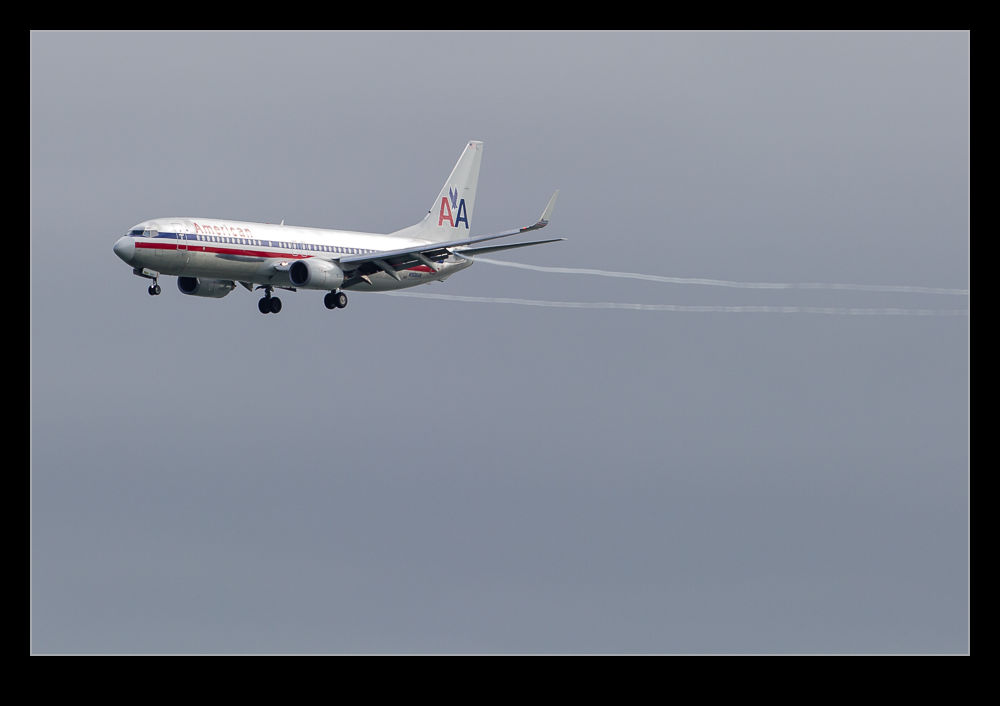 The weather at SFO was actually quite nice (although not when Air Force one departed as I have previously written about). The sun was out and the sky was pretty clear. In fact, there was quite a troubling amount of heat haze. However, once you got towards the south end of the bay, there was pretty solid cloud cover. The planes coming in were in full IMC for a good portion of their approach. Somewhere in the region between Coyote Point and the San Mateo Bridge they would break out of the cloud cover. Then, for the next mile or so, they were in the clear but still in very humid conditions.
The weather at SFO was actually quite nice (although not when Air Force one departed as I have previously written about). The sun was out and the sky was pretty clear. In fact, there was quite a troubling amount of heat haze. However, once you got towards the south end of the bay, there was pretty solid cloud cover. The planes coming in were in full IMC for a good portion of their approach. Somewhere in the region between Coyote Point and the San Mateo Bridge they would break out of the cloud cover. Then, for the next mile or so, they were in the clear but still in very humid conditions.
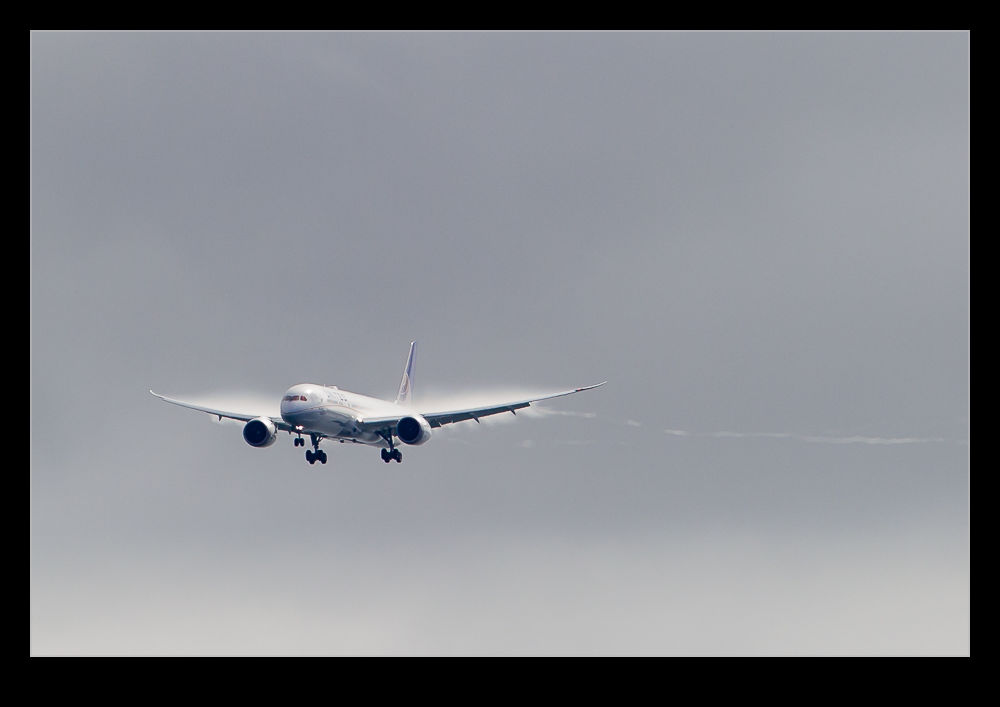 The result of this humidity was a lot of vapor forming up over the wings. The low speed and high lift configuration made the wings a good place to get cloud formations as the moist air passed over them. Additionally, the trailing vortices were showing up well as a result of the condensing moisture in them too. For quite a while, each aircraft showed similar patterns as it descended. The widebodies seemed to be better for showing this but that might just be a function of them being easier to see further away when the effect was most pronounced. The closer they got to the field, the less the effect until it was pretty much gone when they were on final approach.
The result of this humidity was a lot of vapor forming up over the wings. The low speed and high lift configuration made the wings a good place to get cloud formations as the moist air passed over them. Additionally, the trailing vortices were showing up well as a result of the condensing moisture in them too. For quite a while, each aircraft showed similar patterns as it descended. The widebodies seemed to be better for showing this but that might just be a function of them being easier to see further away when the effect was most pronounced. The closer they got to the field, the less the effect until it was pretty much gone when they were on final approach.
Virgin Dreamliner
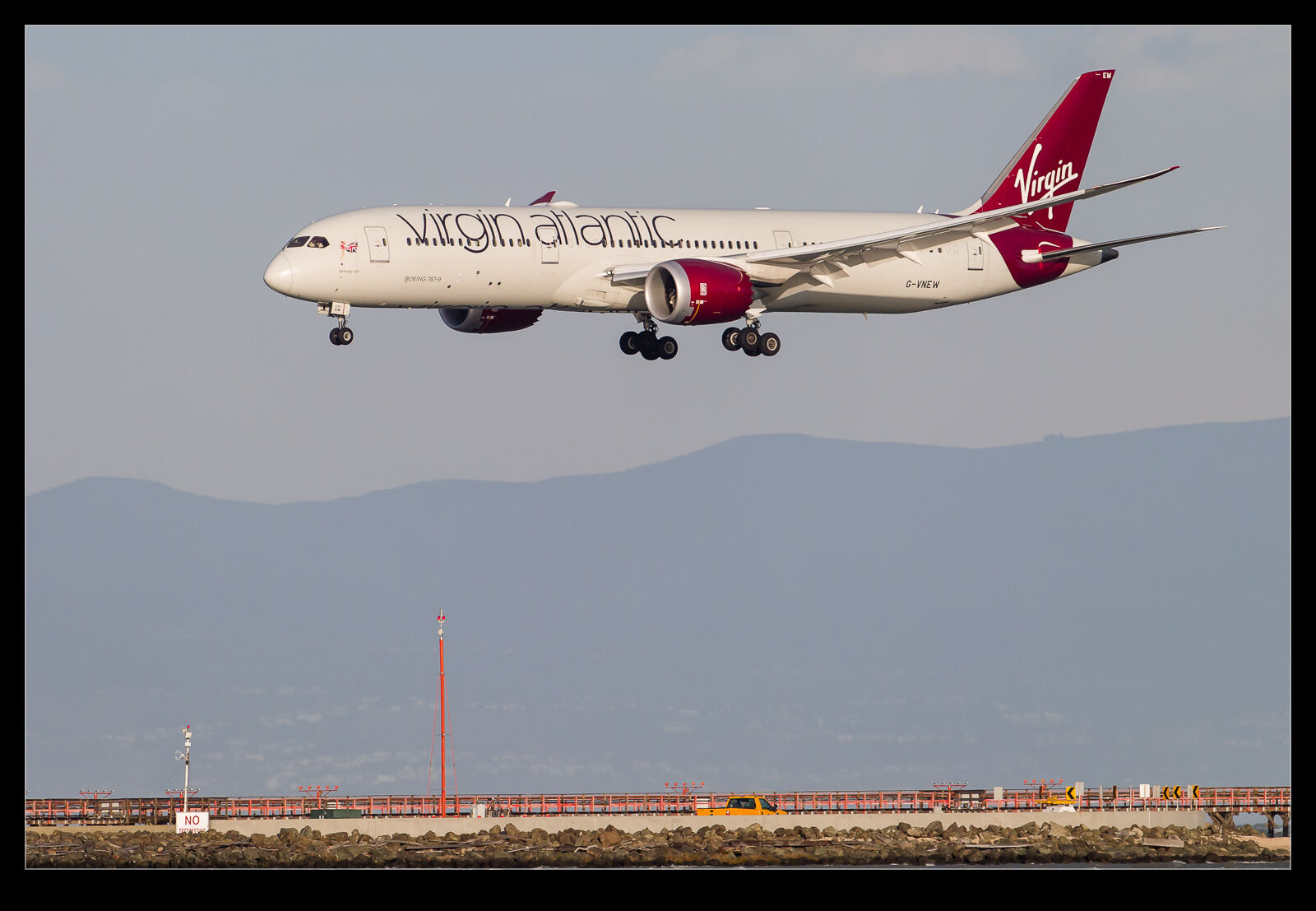 Not long ago I wrote here about the effort to get a Virgin Atlantic A340-600 before they were retired. At the time I noted that Virgin had added a second flight to SFO and it was using the 340 prior to the availability of the Boeing 787-9 later in the year. It turns out that things have changed a little. The 787 is now operating the service but, rather than replace the A340, it has replaced the 747-400 and the A340 is running the additional flight albeit only on weekdays.
Not long ago I wrote here about the effort to get a Virgin Atlantic A340-600 before they were retired. At the time I noted that Virgin had added a second flight to SFO and it was using the 340 prior to the availability of the Boeing 787-9 later in the year. It turns out that things have changed a little. The 787 is now operating the service but, rather than replace the A340, it has replaced the 747-400 and the A340 is running the additional flight albeit only on weekdays.
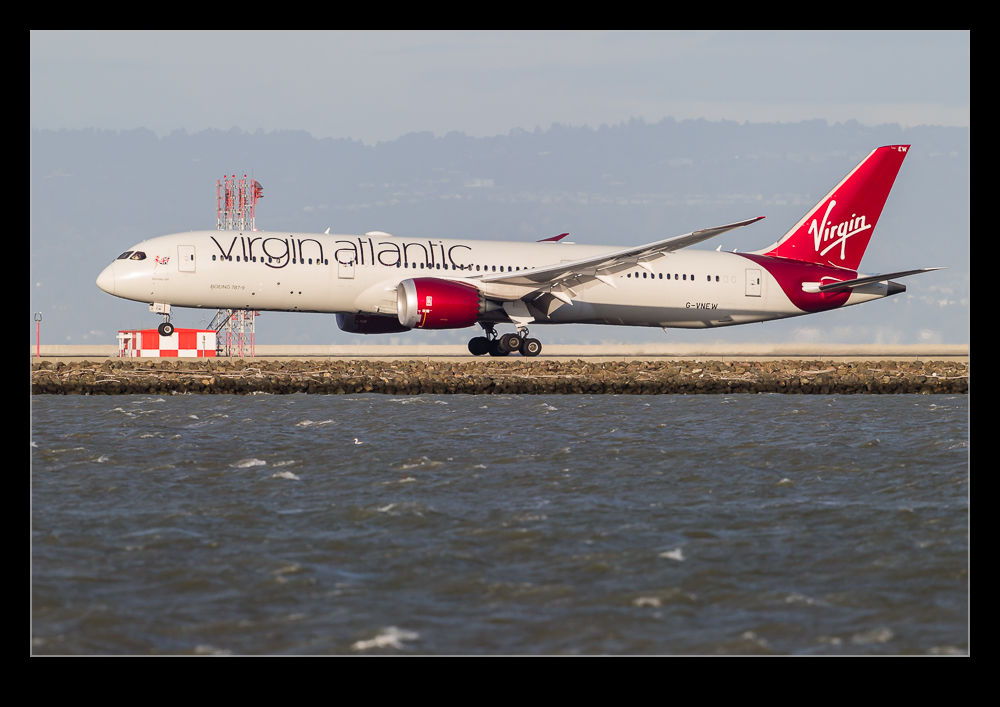 The loss of the 747 is another example of how quickly they are disappearing from services as I have written about a few times now. However, it is nice to have the new type and still retain the increasingly rare A340. Unfortunately, getting out on a weekday to catch the 340 is not usually practical. I have managed to see the 787 at last though. Winter can be a great time to photograph aircraft with low, soft light. It can also combine with crappy weather in the form of high and gusting winds though. Such was the case this time. Hiding behind a tree to try and minimize the impact on the camera does help though. Interestingly, the colors of Virgin Atlantic’s latest scheme do not seem to like digital capture. The red seems a lot more subdued in my images than I recall it being!
The loss of the 747 is another example of how quickly they are disappearing from services as I have written about a few times now. However, it is nice to have the new type and still retain the increasingly rare A340. Unfortunately, getting out on a weekday to catch the 340 is not usually practical. I have managed to see the 787 at last though. Winter can be a great time to photograph aircraft with low, soft light. It can also combine with crappy weather in the form of high and gusting winds though. Such was the case this time. Hiding behind a tree to try and minimize the impact on the camera does help though. Interestingly, the colors of Virgin Atlantic’s latest scheme do not seem to like digital capture. The red seems a lot more subdued in my images than I recall it being!
Nippon Cargo 747-8
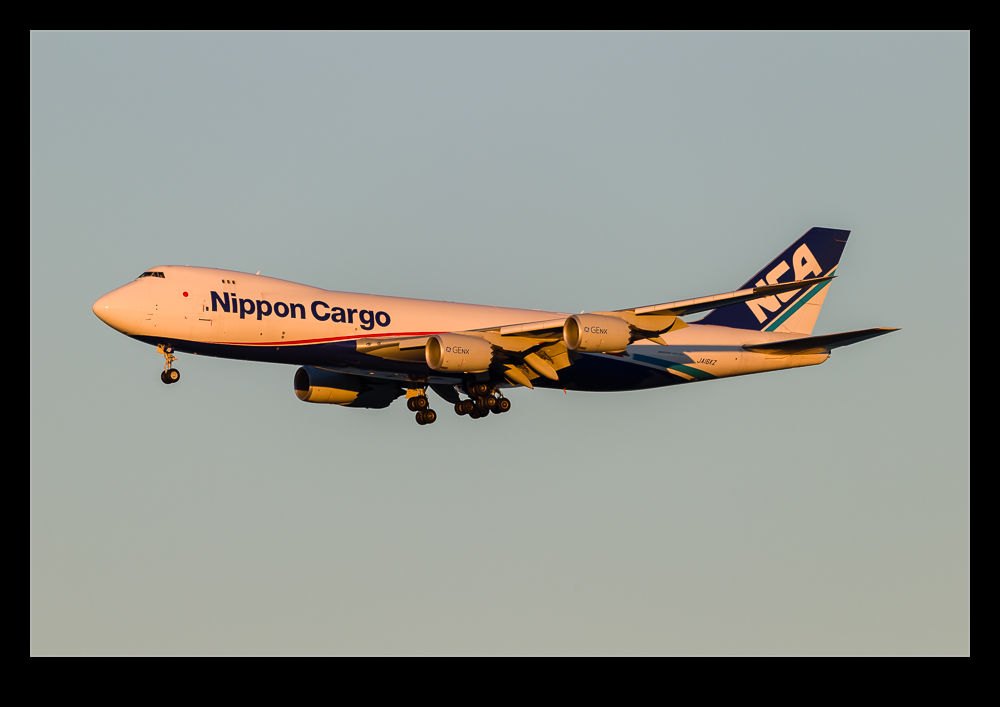 Today’s pictures involve a shout out to Roger Cain who was the one that let me know that this movement was happening. Nippon Cargo operates a regular service to SFO with their Boeing 747-8 freighter. Normally it arrives early in the morning and departs not long afterwards when the light is just coming up. This does not make for a good opportunity to get a good shot of it. For some reason, it was running late and was showing as due in to SFO shortly before sunset.
Today’s pictures involve a shout out to Roger Cain who was the one that let me know that this movement was happening. Nippon Cargo operates a regular service to SFO with their Boeing 747-8 freighter. Normally it arrives early in the morning and departs not long afterwards when the light is just coming up. This does not make for a good opportunity to get a good shot of it. For some reason, it was running late and was showing as due in to SFO shortly before sunset.
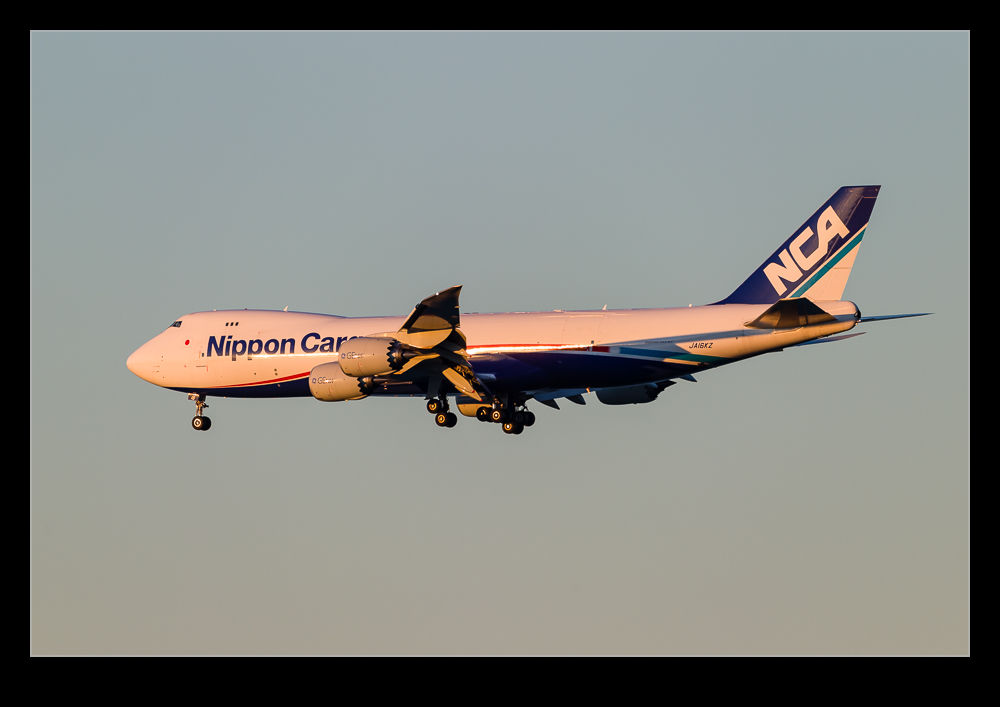 I was in the East Bay dealing with the replacement of a tire on my car. Roger called to tell me about it. What I didn’t know was a) whether I would be able to get across in time based on the tire being fixed and b) whether it would actually depart LAX, its previous stop, soon enough to arrive at SFO before it got dark. Driving across the bay to miss the light was not something I wanted to do. Both Roger and I were tracking the jet online and, as I got the car back, he called to say it was taxiing for departure at LAX.
I was in the East Bay dealing with the replacement of a tire on my car. Roger called to tell me about it. What I didn’t know was a) whether I would be able to get across in time based on the tire being fixed and b) whether it would actually depart LAX, its previous stop, soon enough to arrive at SFO before it got dark. Driving across the bay to miss the light was not something I wanted to do. Both Roger and I were tracking the jet online and, as I got the car back, he called to say it was taxiing for departure at LAX.
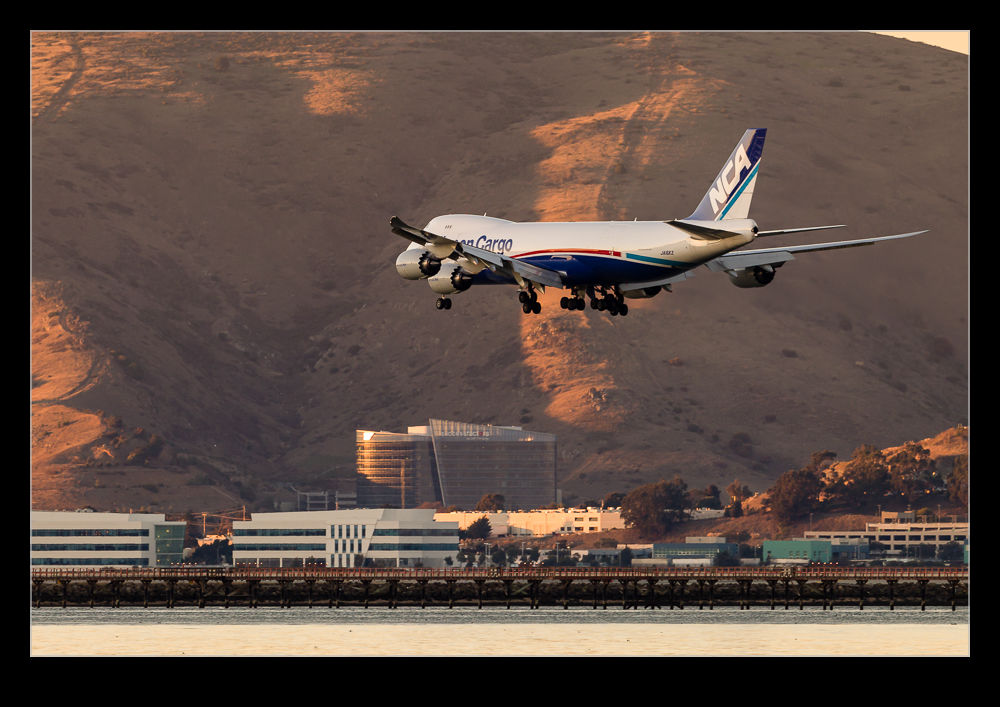 I headed across the bay and got to Roger about ten minutes before it was due to arrive. The light was beginning to go down but it looked like it would work out okay. Sure enough, it came into view just before the sun went below the hills. We got some really nice light on it. I continued to track it to touchdown but, by the time it got to the runway, it was already in shade. It was that close!
I headed across the bay and got to Roger about ten minutes before it was due to arrive. The light was beginning to go down but it looked like it would work out okay. Sure enough, it came into view just before the sun went below the hills. We got some really nice light on it. I continued to track it to touchdown but, by the time it got to the runway, it was already in shade. It was that close!
Zoomify the SFO Departures
I was recently drawn back to something I had experimented with a long time ago but had since forgotten about. I was at SFO when the wind was strong enough to require all departures to operate from the 28s. This resulted in a long line of jets along the taxiway beside the runways as they waited their turn to take off. I shot a very wide panorama shot of them all lined up. It didn’t help that they weren’t bunched too tightly but, even if they had been, the pano that results is very wide and shallow.
There is nothing much you can do with this unless you have a long wall waiting for a mural (which I don’t). However, I still liked the shot. What to do with it? Then I remembered Zoomify. This is an output format embedded within Photoshop that creates a web page that you can zoom in and out of and pan around. It allows someone to explore a large image in more detail if they want to do so. Not quite on the scale of Gigapan images but still a neat tool when you need something slightly different.
Delta 717s
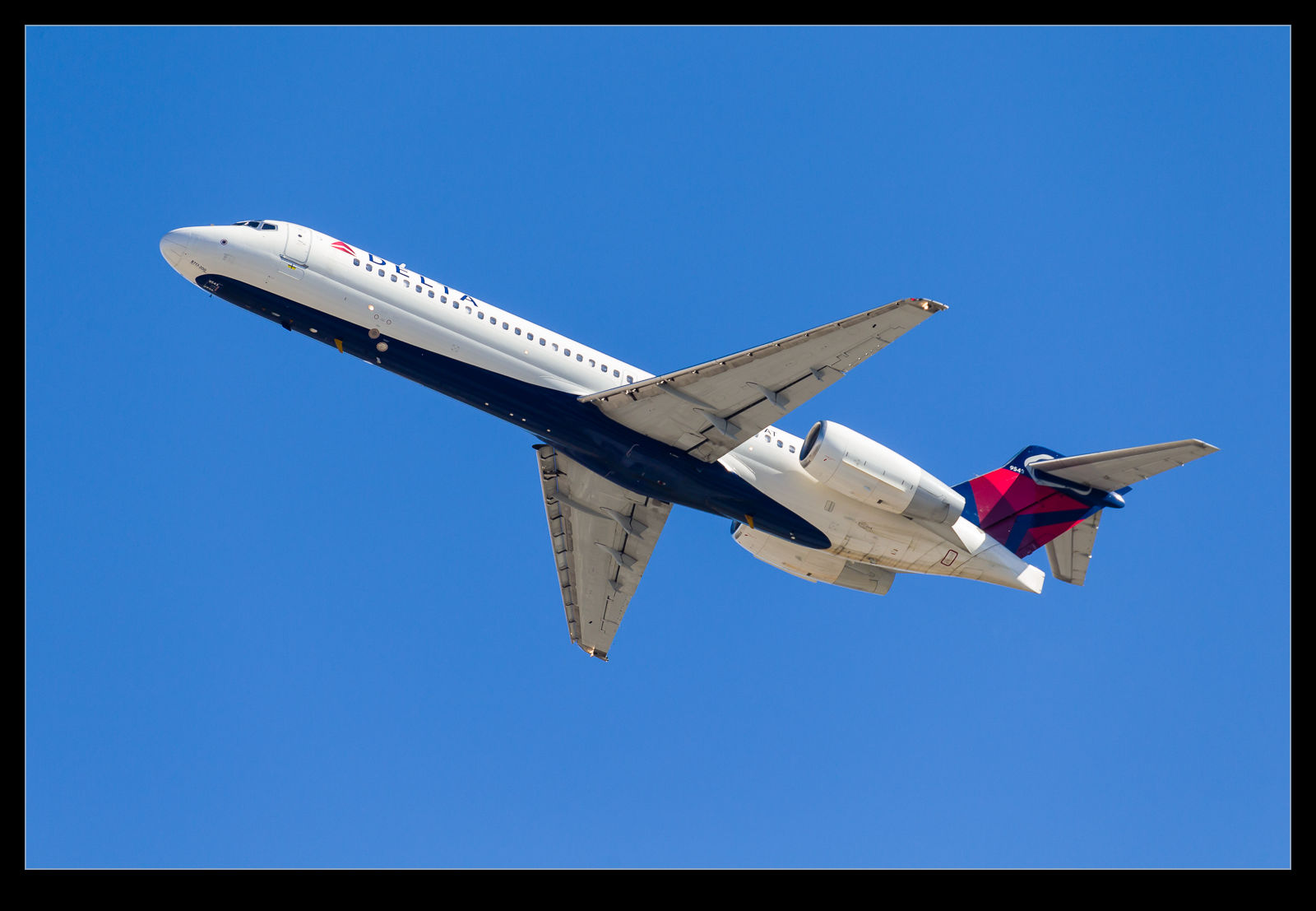 When Southwest bought AirTran, they inherited a mixed fleet of 737s and 717s. AirTran had been a 717 only fleet for a while but had expanded to include 737s as they grew and the production of the 717 ended. It didn’t take too long for Southwest to announce that the 717s were going away. Where to was the question. That was soon answered when Delta picked them all up. Consequently, there has been a steady stream of 717s showing up in Delta colors recently.
When Southwest bought AirTran, they inherited a mixed fleet of 737s and 717s. AirTran had been a 717 only fleet for a while but had expanded to include 737s as they grew and the production of the 717 ended. It didn’t take too long for Southwest to announce that the 717s were going away. Where to was the question. That was soon answered when Delta picked them all up. Consequently, there has been a steady stream of 717s showing up in Delta colors recently.
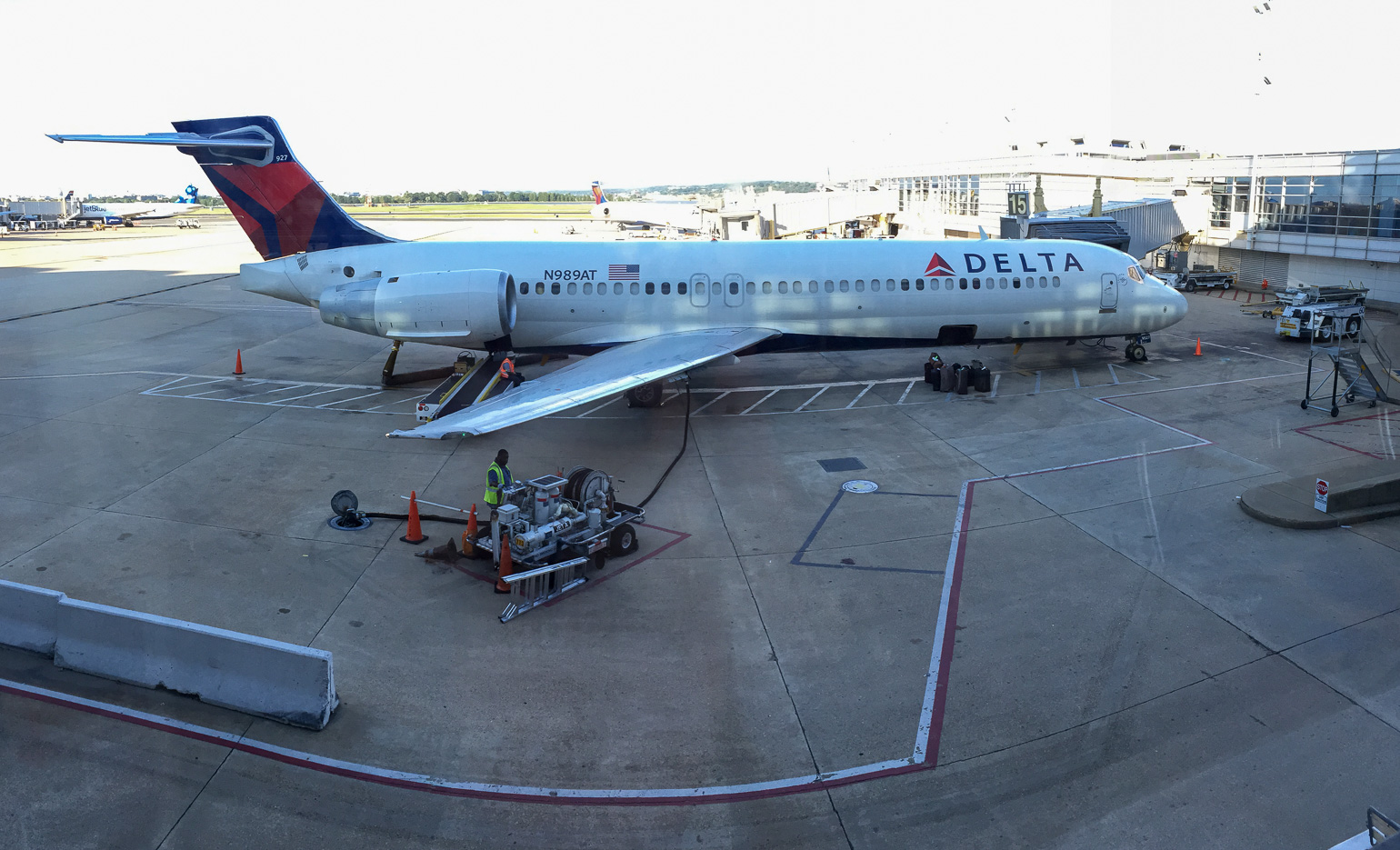 I have come across a few of them recently on both sides of the country. Despite the age of the basic DC-9 design, the updates introduced and the chunkier profile of the more modern engines means that there is something slightly different about the appearance of the jet. I quite like the look of it. Previously, the majority of the examples I had seen had been Hawaiian (including those I had ridden on). It is nice that the type has found a new home which means they shall be around in the US for a while to come.
I have come across a few of them recently on both sides of the country. Despite the age of the basic DC-9 design, the updates introduced and the chunkier profile of the more modern engines means that there is something slightly different about the appearance of the jet. I quite like the look of it. Previously, the majority of the examples I had seen had been Hawaiian (including those I had ridden on). It is nice that the type has found a new home which means they shall be around in the US for a while to come.
Closest Yet on the 777-300ER Gear
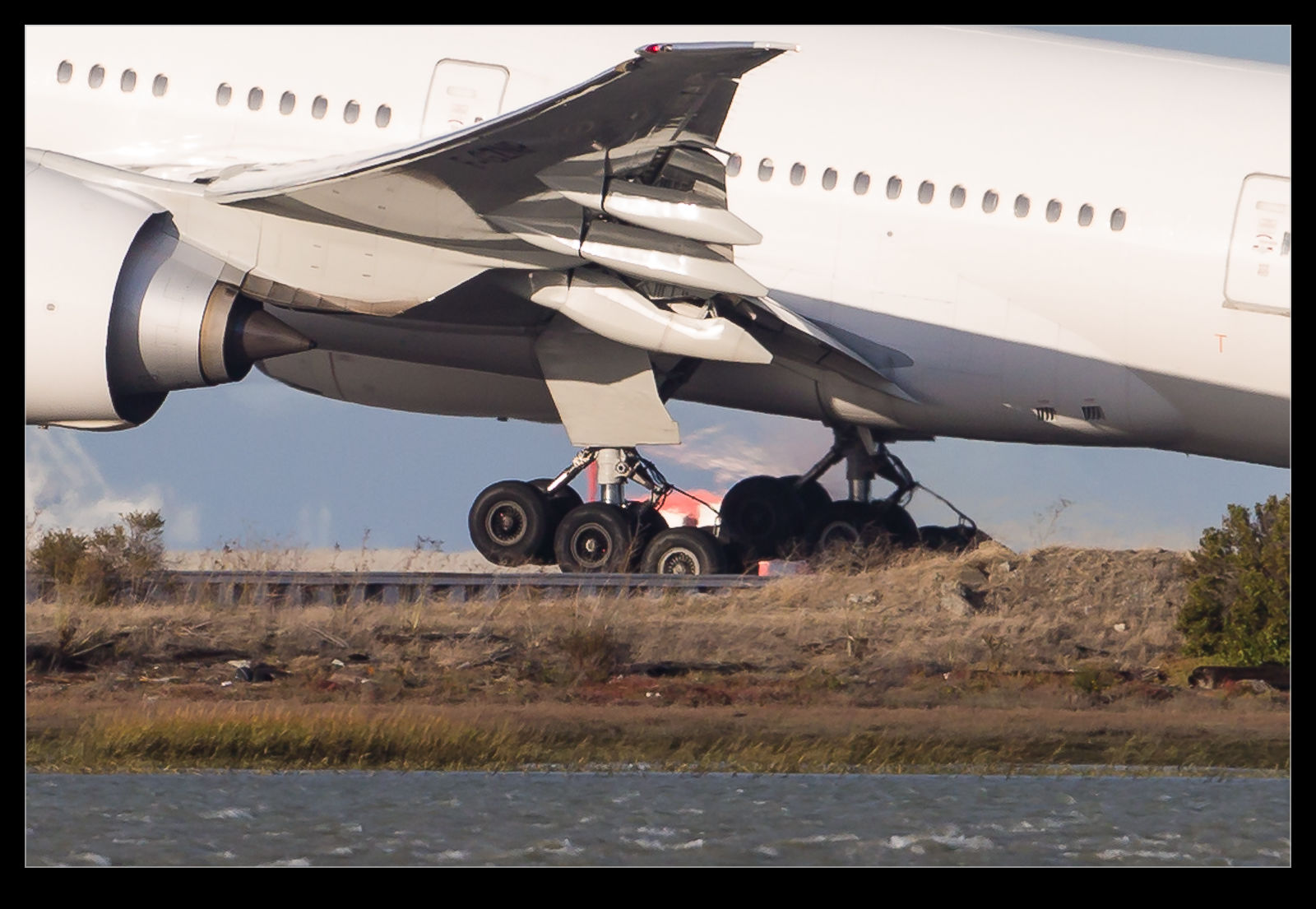 You might not think a really windy day was going to be a great time to head out and take photos with a long lens hand held. This certainly is not ideal but there are some advantages that a really windy day can bring. The purpose of the trip was to catch the new Virgin 787-9 service coming in to SFO on a Sunday afternoon when I didn’t have anything else planned. While the wind was very strong, the light was nice so I gave it a go. What I didn’t realize was that, while it was windy at home, it was really windy at SFO! Everything was operating on the 28s because the wind was above 30kts and gusting to well over 40kts. This also meant that departures got airborne quite quickly given that they started with over 30kts after zero takeoff roll!
You might not think a really windy day was going to be a great time to head out and take photos with a long lens hand held. This certainly is not ideal but there are some advantages that a really windy day can bring. The purpose of the trip was to catch the new Virgin 787-9 service coming in to SFO on a Sunday afternoon when I didn’t have anything else planned. While the wind was very strong, the light was nice so I gave it a go. What I didn’t realize was that, while it was windy at home, it was really windy at SFO! Everything was operating on the 28s because the wind was above 30kts and gusting to well over 40kts. This also meant that departures got airborne quite quickly given that they started with over 30kts after zero takeoff roll!
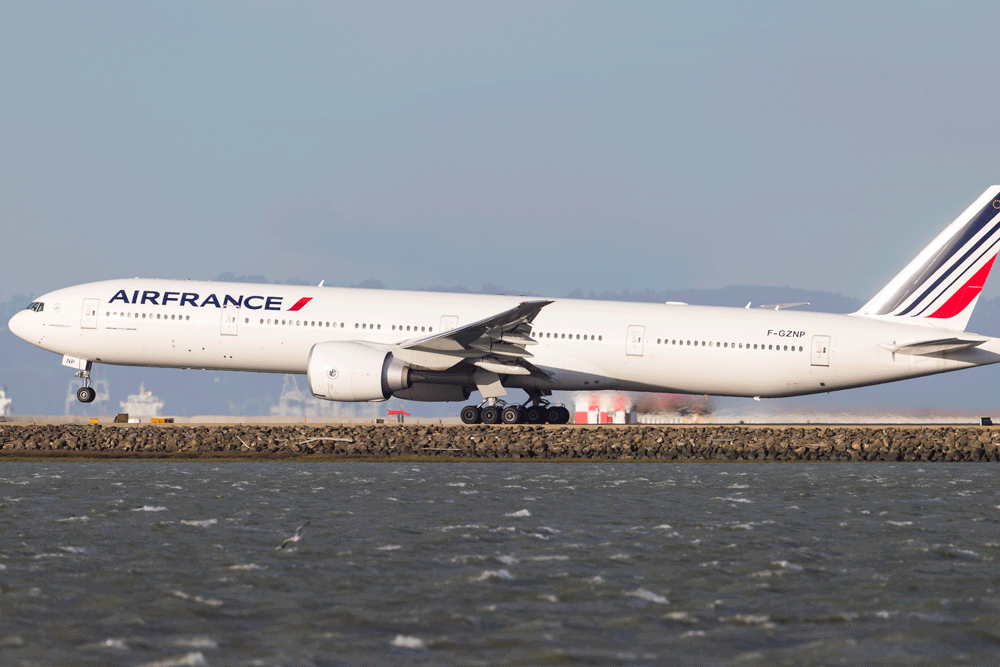 The heavy jets were frequently airborne before the intersection of the runways and this included an Air France 777-300ER. Consequently, I was able to get a clearer view of the gear during rotation than I have managed before. Above are a still of the gear during rotation and also an animated GIF of the rotation in progress. I think I shall consider myself happy with this. It is the best I have got. Unless I get to spend some time out by the runway while one is departing, I doubt I will get a better chance than this.
The heavy jets were frequently airborne before the intersection of the runways and this included an Air France 777-300ER. Consequently, I was able to get a clearer view of the gear during rotation than I have managed before. Above are a still of the gear during rotation and also an animated GIF of the rotation in progress. I think I shall consider myself happy with this. It is the best I have got. Unless I get to spend some time out by the runway while one is departing, I doubt I will get a better chance than this.
